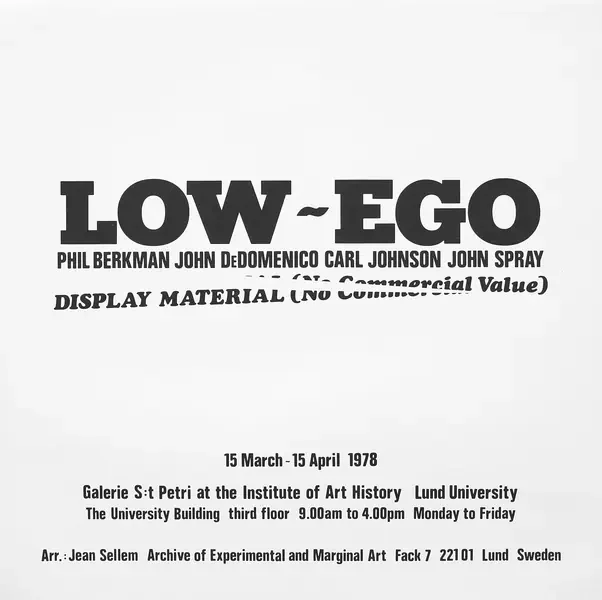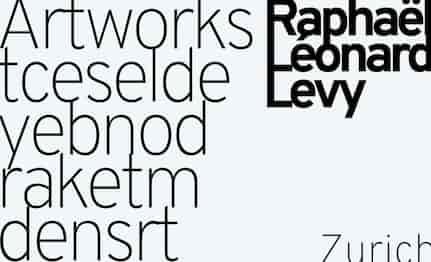CLICK TO VIEW PRESS RELEASE

LOW-EGODISPLAY MATERIAL(No Commercial Value)15.03 - 15.04.1978
PHIL BERKMAN
JOHN DEDOMENICO
CARL JOHNSON
JOHN SPRAY
The American society, with all that it implies — hopes, possibilities, limitations, and disappointments — constitutes the starting point, consciously or unconsciously, for Phil Berkman, John De Domenico, Carl Johnson, and John Spray.
These four artists, all based in the United States, were invited by Galerie S:t Petri in Lund, and their works are being presented at the Department of Art History, third floor of the University Building (display material).
“Low-ego”, display material (“no commercial value”) is the title of the exhibition, which primarily concerns how human beings confront their environment — how they are shaped by it and/or reshape it. Psychological, sociological, and anthropological aspects of human life intertwine, becoming equally significant and hardly separable.
This is perhaps most clearly illustrated by John De Domenico, whose “SOM-OM” works revolve around anthropological and sociological theories on how the human body and its structure function as instruments of communication through which ideas, language, and culture emerge and evolve further — in the form of analogies and comparisons. “SOM-OM” symbolically depicts certain “things” with a specific cultural meaning, showing how they are “adapted” to human gestures and expressions — or conversely, how the body adjusts itself to the “thing.”
Thus, human beings are faced with a choice: to yield to the demands of their environment and adopt its attitudes, or to influence the surrounding world themselves. As humans are both individual and social beings, these dual processes are in constant motion — the question is simply which one predominates.
John Spray emigrated from England to the United States five years ago. The encounter with American culture — its “Wild West” law-and-order ethic, violence, and sensationalism — was a shock that he has not yet overcome. His thought-provoking series of police photographs taken from various American newspapers conveys a sense of hopelessness in the face of seemingly insoluble problems.
Carl Johnson is primarily concerned with understanding how a decision is made. What makes each of us choose, what lies behind it, what are our motives and intentions? Why do we like some things and dislike others? On “American Lunch Bags” appear statements such as: “I like anything,” “I like something,” “I like everything.”
According to Johnson, these subjective choices have certain causes; he delves deeper into them. “Countries” shift from landscape to memory-images of ideas. We think politically as well as geographically. Units are formed out of landscape — in alphabetical order. But even if the lines remain, the references change, and we associate differently.
Phil Berkman likes to play with functional objects or wants the spectator to participate in a metaphorical performance, as in “The Shadow Play.” In “Why Dance?” he also explores dimensions such as activity/passivity and emotion/intellect.
The exhibition is open from March 15 to April 15, 1978, weekdays from 9:00 to 15:30.


